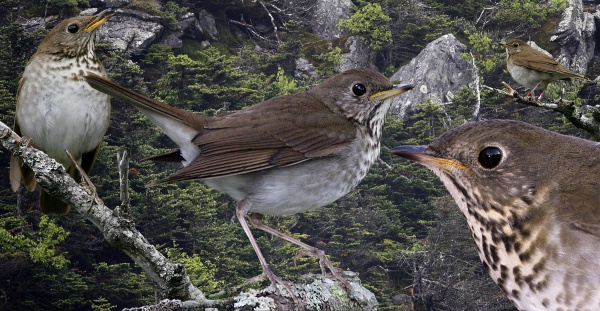Facts About Bicknell's thrush
The Bicknell's Thrush (Catharus bicknelli) is a medium-sized bird native to North America and is considered one of the rarest and most localized breeding thrushes. It thrives in high-altitude coniferous forests and disturbed habitats in the northeastern United States and Canada. Named after Eugene Bicknell, an American amateur ornithologist, this bird closely resembles the Gray-cheeked Thrush (Catharus minimus), though there are subtle differences in their appearance and songs. The Bicknell's Thrush is slightly smaller than other northern migratory thrushes, featuring olive-brown upperparts and off-white underparts with gray flanks.
Belonging to the genus Catharus in the Turdidae family, the Bicknell's Thrush is closely related to the Gray-cheeked Thrush. It breeds in high-altitude coniferous forests and recently disturbed habitats in the northeastern region of North America. During migration, it exhibits greater habitat flexibility, akin to other migratory species such as the Veery (Catharus fuscescens).
A remarkable aspect of the Bicknell's Thrush is its unique mating system, where females mate with multiple males. The nests are typically bulky cups constructed from twigs and moss, and both parents participate in feeding the nestlings. Their diet predominantly consists of insects and wild fruits. Unfortunately, the species is threatened by habitat degradation, industrial pollution, and climate change, which could potentially lead to a decline in their population.
Conservation efforts are currently underway to protect the Bicknell's Thrush. These initiatives include managing habitats near ski trails, limiting disturbances near mountain tops, and reforesting agricultural lands in their wintering range. The International Bicknell's Thrush Conservation Group has also established protocols to aid in conserving this species. Although the Bicknell's Thrush faces numerous challenges, ongoing efforts aim to safeguard and preserve this rare and distinctive bird.

 Canada
Canada